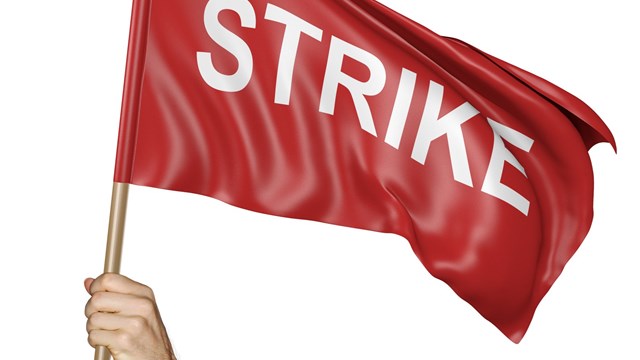Workers' compensation as we know it today—the insurance system that provides medical care and other benefits for workers who become sick or injured in the course of doing their jobs—grew out of the European labor movement in the late 19th century. It was one of the progressive reforms introduced by Germany’s Chancellor Otto von Bismarck in an attempt to diminish the appeal of the then-popular socialist parties.
The U.S. proved more resistant to the idea, and early attempts to establish workers' compensation by the states faced challenges in the courts. At the time, workplace injuries in the U.S. were considered to be under tort law, and cases had to be tried in the court system, a time-consuming and costly procedure. Believe it or not, even some early American labor unions were resistant to the idea of state-administered workers' compensation, because they felt it would decrease their role as providers of worker benefits.
In New York State, the turning point was the Triangle Shirtwaist Factory fire in 1913, in which 146 people, mainly young women, died as the result of unsafe conditions in the factory. Outrage over the fire helped lead to the passage later that year of a New York state workers' compensation law that was strong enough to stand up to court challenges.
What's Covered
How does the law apply to co-op and condo employees, whether they are secretaries, management, maintenance people, doormen, supers or bookkeepers? According to Evan Spelfogel, a member of the Manhattan-based law firm Epstein, Becker & Green PC, “The same as all other covered employees; anyone injured on the job, in the course of or arising from the employment, is covered without regard to fault.”
In other words, workers’ comp is similar to a no-fault auto-insurance policy. It eliminates the need to go through the court system in the great majority of cases. Employees get benefits regardless of who is at fault, and in most cases employees cannot sue their employers.
Ed Mackoul, president of insurance brokerage Mackoul Associates in Island Park, says that exceptions can happen if the employee is injured because of the employer’s intentional or reckless actions, or if the employer did not have workers’ compensation insurance. In these cases, the employee can bypass the workers’ compensation system to sue the employer in court for a full range of money damages but Mackoul stresses that these circumstances are unusual.
Rachel McEneny, spokesperson for the state Workers' Compensation Board, adds that “There is a perception that so-called independent contractors do not need workers’ compensation insurance coverage; that is often false.” (More about this later.)
Just about any job-related accident, says William Turley, a senior partner with the law firm Turley Redmond Rosasco & Rosasco, LLP in Ronkonkoma, is covered under workers' compensation: slip-and-fall accidents, lifting accidents, repetitive-stress injuries. “It runs the gamut, as long as it’s related to the job,” he says.
Here are some examples: People who come in contact with asbestos may contract a chronic condition called asbestosis, people who work on computers at a desk may suffer from carpal-tunnel syndrome, and people who work in an environment where there is constant dust in the air may develop asthma. Some psychological injuries, says Spelfogel, may be covered if they are shown to result from a physical injury.
Under the law, there is a “class code” that is used for building operations, says Mackoul. “It assumes work associated with being employed by the building, such as sweeping, cleaning and minor repairs. It does not assume that the super will be ripping up the current roof and laying down a new one, so an exposure like that could conceivably be excluded until the proper class code is listed.”
Benefits available under workers’ compensation for those who suffer job-related injuries are wide-ranging: medical treatment for injuries including doctors and hospitals, reimbursement for out-of-pocket medical and travel expenses, physical therapy, reimbursement for lost wages up to a certain maximum and prescription drugs.
Off-Site Injuries
So far, we’ve just talked about injuries on the job itself. But what happens if someone is injured on the way to or from work, or on their lunch hour? Are they entitled to workers’ compensation insurance?
Generally not, says Spelfogel, but there are exceptions. “For example, if the worker is asked to pick up building supplies, make a delivery or drop off items at the Post Office on the way to work or going home from work or during lunch and is injured, the worker may be covered.” Generally, such incidents have to be dealt with on a case-by-case basis.
One interesting example given by Mackoul involves supers who live in the buildings they work in. “There is a good chance that an injury on the way to or leaving work for a super would be covered.” Of course, for larger developments that employ an entire maintenance staff, workers may or may not live in the complex, and even those who live there probably don’t spend all their time in one particular building.
What about long-term injuries? While medical care related to an injury is payable for a worker’s entire life,” says McEneny, “wage-replacement benefits for injuries classified as permanent partial disabilities are capped at 10 years after they’re discovered. For other injuries, wage-replacement benefits may be payable over the course of a worker’s lifetime. The good news for condos and co-ops is that, according to Mackoul, “The building’s liability will not be involved in the event that an employee of the co-op or condominium is injured on the job.”
What To Do
Insurance considerations aside, the first thing board members or managers should do after an employee is injured is, of course, to get medical help as soon as possible. As soon as that happens, step two is to report the accident to your insurance company. You also must make out a report to the Workers’ Compensation Board, although often insurers will make this report for you.
According to Turley, in New York state, the “Employer’s Report of Work-Related Injury/Illness” is known as a C-2 form, and can be found on the Workers’ Compensation Board’s website. It must be submitted to the Workers’ Compensation Board within 10 days of the incident, or you may be subject to a penalty.
As for employees, they have 30 days to report the claim to the employer and two years to file a claim with the Workers’ Compensation Board if they so desire. “Generally,” says McEneny, “workers should file as soon as they know they’re ill or suspect they have an occupational disease.”
Call Your Attorney
For managers and board members, it’s also a good idea to call your attorney in the event of an on-the-job injury, although that's not a step required by law. “At one time, attorneys were not always necessary,” says Turley, “but now, the system has become so complicated that even the simplest case needs the guidance of an attorney.”
Even if you think you can handle the matter without legal counsel, buildings must bear in mind, in the words of Spelfogel, “that an insurer and the insurer’s attorneys may have interests inconsistent with your building’s. For example, the insurance carrier may choose to settle more quickly—and for more money—than the building would want, because the insurance carrier may recoup the excess by raising its premiums.”
Contractors vs. Employees
In many cases, the person doing a job in your building or development—someone replacing damaged glass in window, for example—is not an employee. He or she is a contractor. How does this distinction impact workers’ compensation if that person gets hurt on your premises?
It’s complicated. There are several factors that go into whether that person is covered—and tax status is only one of them. As strange as it may sound, the same person can be an independent contractor for tax purposes and an employee for workers’ compensation purposes.
The key is direction and control. If the worker in question uses the building’s equipment, works hours set by the building, and is closely supervised by the building while doing the job, then that person could be treated as an employee. If the contractor sets his own pay scale, provides his own equipment and sets the parameters of the job, then workers’ comp will likely treat him as an independent contractor.
As we see, there are some gray areas. For this reason, whenever the building hires a contractor, it should insist that the contractor maintain its own workers' compensation policy for its workers. In addition, says Spelfogel, the contractor’s insurance policy should name the building as an “additional insured” for the duration of the contract project.
Once a claim has been filed, fact-finding hearings are held, followed by determinations by the administrative law judge. If the employee is a member of a union, (such as the service workers' SEIU Local 32BJ), the union will generally do all it can to help the employee, but for the worker to share correspondence relating to the claim with the union, he or she will have to sign a release authorizing that disclosure, known as a 110-a form.
There are times when a claim might be rejected. “These could include,” says Spelfogel, “that the employee was not engaged in job duties when injured, that the accident never occurred, that the injured worker was an independent contractor or that the extent and degree of the injuries are far less than was alleged by the employee and the employee’s doctors.”
Mackoul lists several other circumstances that could cause a claim to be rejected: Injuries involving drug or alcohol abuse, self-inflicted injuries, injuries from a fight started by the employee, injuries resulting from horseplay or violation of company policy and felony-related injuries.
In most cases, the building’s claims record will affect its premium costs and its insurability. “At a certain point,” says Spelfogel, “after multiple employee claims and after raising premiums, the building’s insurance carrier may decline future coverage. At that point, the building will have to go to the State Insurance Fund for its workers' compensation coverage. Its premiums then will be very much more expensive than what they would have been with a private carrier.”
Despite problems that may come up along the way, in the end, workers’ comp protects both the board or building and the employee. And in doing so, it makes things less time-consuming, less stressful and less expensive.
Raanan Geberer is a freelance writer and a frequent contributor to The Cooperator.







Leave a Comment